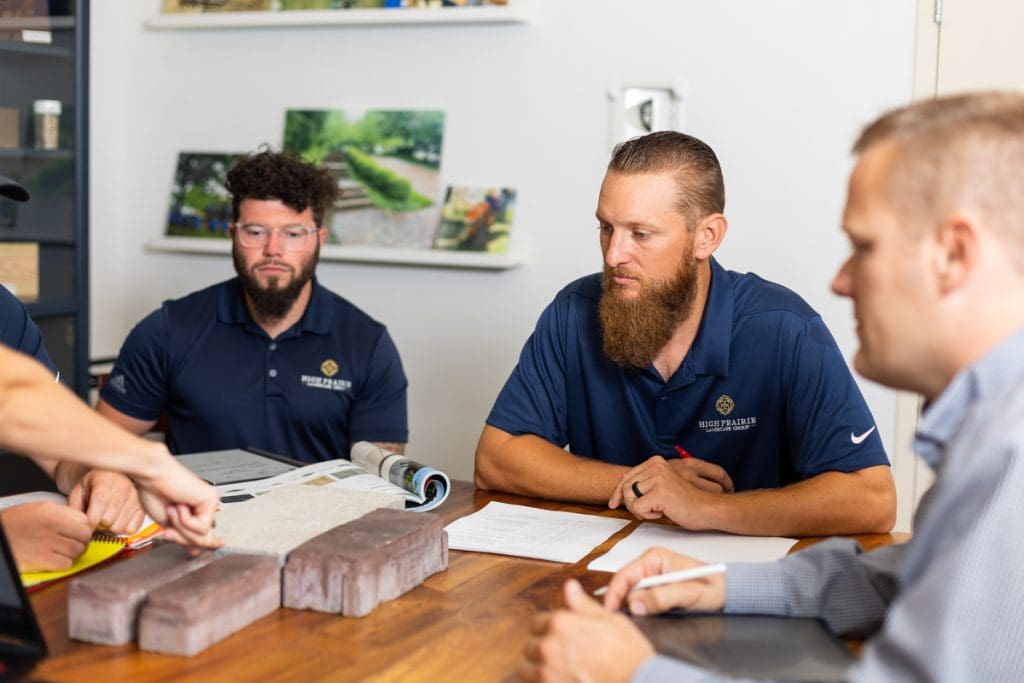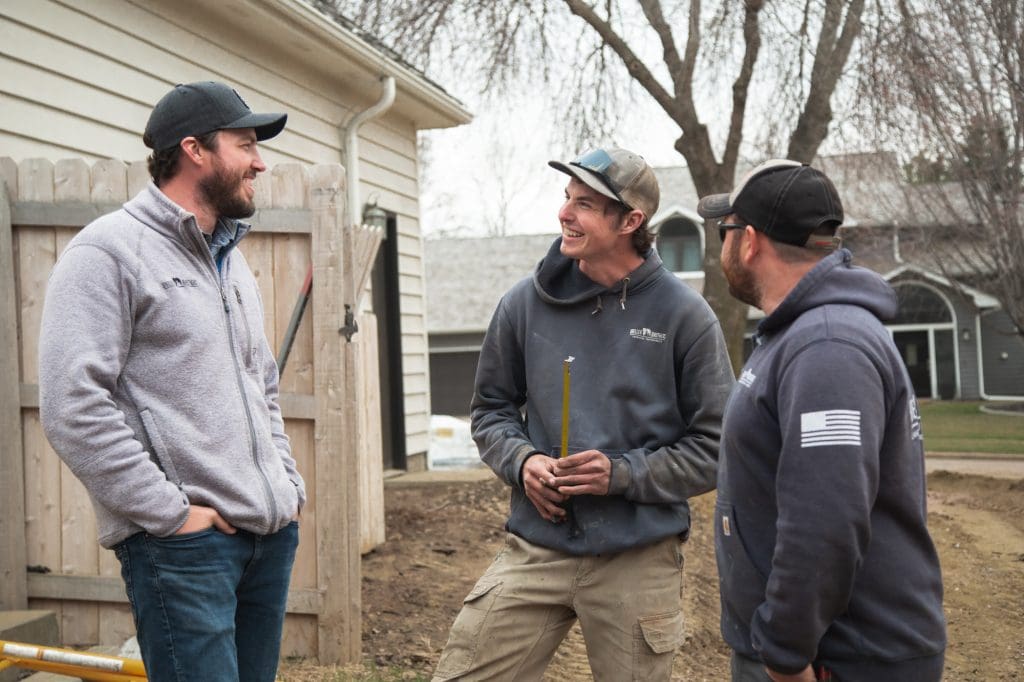
In a relay race, teams have to seamlessly pass the baton from one athlete to another in order to succeed. Similarly, project handoffs are a critical step to ensure the work your team has sold is executed properly and in a timely manner by your production team.
“Project handoffs enable effective communication and clarification of project goals, timelines, and expectations between different parties involved,” says Tyler Nelson, landscape production manager, for Weller Brothers Landscaping, based in Sioux Falls, South Dakota. “They allow for a smooth transition of responsibility from one person to another, minimizing the risk of any miscommunication or delays.”
Kamsi Gerry-Ofor, a landscape design sales associate for Live Green Landscape Associates, LLC, based in Reisterstown, Maryland, says she can spend days, weeks or even months with her clients ironing out the details of the project so they get exactly what they ask for. Proper project handoff practices ensures the client receives the quality of work they are expecting.
Failing to conduct a project handoff can result in unclear expectations, missed timelines, ordering the wrong quantities, size or color of materials or even misinterpretation of plans.
“Being proactive and beginning the process early will prove positive results,” says Michael Wagner, director of company operations for Designscapes Colorado, based in Centennial, Colorado. “When the team is reactive and doesn’t address all aspects of the project in the handoff meeting, key components will surely be missed and will directly affect the schedule, budget, and client satisfaction.”
What to Cover
Project handoffs should be extensive as they are covering every aspect of the project. Elements that must be discussed are the schedule, budget, client expectations, communication, feasibility, and safety/risk approach.
“Rushed project handoffs often skim the surface with a scope, design, and job planner review,” Robyn Schmitz, owner and CEO of High Prairie Landscape Group, LLC, based in Edwardsville, Kansas. “This leaves out important details that set the project up for success. (Although it’s better than no handoff at all!) The customer feedback forms, review of photos and videos of site conditions, and strategically reviewing long-range ordering or permitting needs is key to thorough execution.”
Schmitz adds that project managers need ample time to process the information provided and ask questions.
When reviewing the schedule, share ordering timelines, expected completion dates as well as important milestone dates.

“Not only does this help ensure the project stays on track, but this is vital for project management and production crews to assemble resources and subcontractors ahead of time given the workload challenges the industry faces due to the seasonality characteristics,” Wagner says.
Understanding the project’s scope and budget is important so the team can determine the best practices for meeting the proposed budget. Sharing client expectations should be also passed on, as knowing their wishes can mitigate conflict or dissatisfaction during the project’s installation.
“It is a common practice of mine to take notes at every single meeting with the client, from the initial phone call to sales presentations and design reviews, all the way to the signed contract,” Gerry-Ofor says. “This way, I can relay every bit of information to the production team.”
Aside from how the client prefers to be communicated with, communication channels should also be set up for your different teams so everyone knows who to contact if a situation arises.
When reviewing the design and construction documents, discussions about the feasibility should occur as access, community regulations or site conditions could become issues. Another critical aspect to cover is the potential hazards or risks of the site/project.
“One of the most overlooked aspects of a project handoff is addressing risk,” Wagner says. “This doesn’t just mean the risk of someone being injured, or something being damaged. What this means is addressing potential risk or safety issues proactively, instead of being reactive.”
Wagner says this includes considering water drainage around the site, who to contact in case of a site emergency, regulatory compliance with building codes, load and weight of supporting platforms, retaining walls, and more. Other commonly overlooked aspects to discuss include:
- Unique client requests (Requested start/completion dates, scheduled events, travel plans)
- Permitting processes and inspection schedules
- Access to the job site (Is the gate wide enough? Will you have to pull out sections of the fence to get equipment in?)
- Material availability and lead times
Following Check-Ins
While they might be called project handoffs, this doesn’t mean the design and sales team should check out with the project after this initial meeting.

How frequently these following check-ins should occur depends on your company’s operations as well as the size and scope of the project. Nelson suggests holding weekly or biweekly meetings on-site as it can be used to resolve any issues that have come to light. Schmitz says they have daily communication with key team members and weekly meetings for project updates.
“Designers should make it a point to visit their job sites every single day it is in production to ensure that everything is going to plan, to answer any questions the clients may have along the way, and most importantly, to make executive decisions if/when unforeseen issues arise that may warrant minor adjustments to the design,” Gerry-Ofor says.
Wagner suggests check-ins regularly include the client, the sales/design team and project management.
“These three stakeholders of the project should communicate regularly throughout the entirety of the project to discuss successes, challenges, or any concerns that may arise,” Wagner says. “Site visits should be performed regularly as a collective group, as this helps to get engagement from the client throughout the project, as well as builds the relationship so if something arises or needs changed, the client doesn’t feel hesitant in discussing it.”
Conducting Effective Handoffs
Nelson, Schmitz and Wagner all stress the importance of having a standard process for your project handoffs, including who needs to be there, an agenda and a materials checklist.
“Many times project scope, scheduling, budgeting, and client expectations can all be tremendously impacted by the effort and proactive planning of communication, and it can directly affect the project results and the relationship with the client and the culture of the organization,” Wagner says. “Communicate often, and communicate early to be an effective sales/design and production team!
Because there is so much information shared in a project handoff, Gerry-Ofor encourages documenting everything in a shared folder or Microsoft OneNote for each client so team members can deposit and access information as needed.
“Hold one another equally accountable for their role,” Nelson says. “Use mistakes as learning opportunities and understand where the breakdown in the process occurred. Share the measurables with the team. Discuss the hours and budgets related to the job to ensure everyone has a uniform goal that is easily measured and tracked.”

